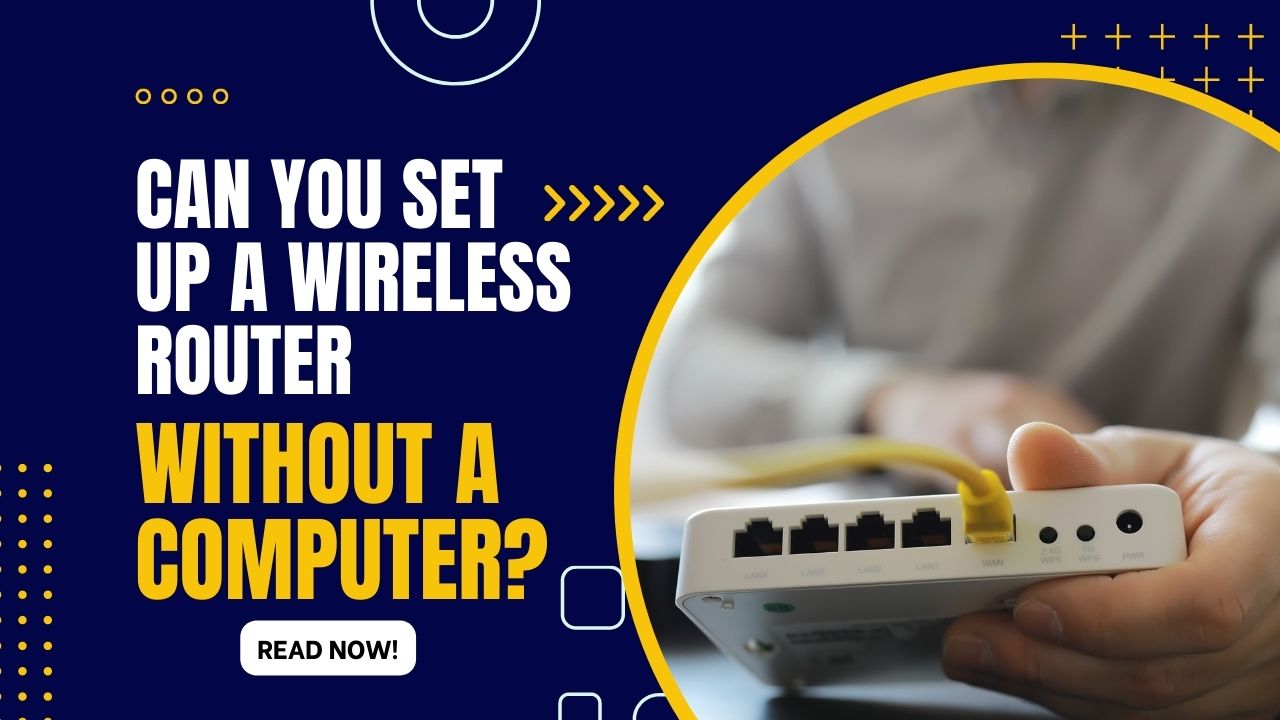 Wireless routers allow users to access the internet in a wireless environment. These devices are often setup with the assistance of a computer. However, it is possible to set up a wireless router without the use of a computer.
Wireless routers allow users to access the internet in a wireless environment. These devices are often setup with the assistance of a computer. However, it is possible to set up a wireless router without the use of a computer.
This article examines this possibility and offers advice on how to configure a wireless router without the assistance of a computer. The process of setting up a wireless router without the use of a computer is becoming increasingly popular due to its convenience and ease-of-use.
It eliminates the need for wires and expensive hardware. Allowing users to quickly access the internet from any location within range of the wireless signal. This article explores various methods for configuring a wireless router without using an intermediary device such as a laptop or desktop computer.
Preparation Steps for Installing a Router

Setting up a wireless router without a computer may seem like a daunting task. But it can be done with the right steps and some patience.
To start, installing antennas is an essential first step for any router setup. It is important to make sure that the antennas are correctly installed and secured in place. Doing so will ensure that the signal strength is strong and consistent throughout the area of coverage.
Next, users should familiarize themselves with the user interface of the router to ensure they understand how to use it properly. This includes connecting devices to the network, configuring settings, and resetting passwords if necessary.
Finally, once all preparation steps have been completed and users have become comfortable with their new router, they can go ahead and connect it to their modem or ISP connection.
With this complete, users are now ready to enjoy their wireless network in its full glory.
Configuring the Router Without a Computer
Configuring a wireless router without the use of a computer can be done by following specific steps.
Firstly, the router must be properly connected to a power source and the modem.
Secondly, the router must be configured with passwords for access and security. This can be done through manual configuration in the router menu.
Finally, once these settings are complete, the router will begin broadcasting its Wi-Fi connection and is ready for use.
To configure a wireless router without a computer:
- Connect the router to a power source and modem
- Set up passwords for access and security through manual configuration
- Activate the Wi-Fi broadcast once settings are complete
These steps will ensure that your wireless router is properly configured without resorting to using a computer or any other device.
Once completed, users can start connecting multiple devices to the network with ease while being protected from potential security threats at all times.
You might also like: Can You Use Xbox as a Computer
Connecting Devices to the Router

The process of setting up a wireless router is akin to constructing a bridge between the world and your home. It serves as an access point for all of your devices, allowing them to connect to the internet without the need for wires. To do this efficiently, managing bandwidth appropriately is essential.
Connecting devices to your router requires configuring certain settings. Firstly, you’ll need to establish a secure connection with the router using a password or security key. These should be provided in the documentation that comes with the router.
After that, you can start connecting other devices such as computers, tablets, and phones.
After successfully connecting all of your devices to the router, it’s important to keep track of how much data is being used by each device. As well as limit any activity that consumes too much bandwidth. This will ensure that everyone at home has enough access points for their internet needs without compromising on speed or reliability.
With careful management and monitoring of data consumption, you can create a reliable wireless network in your home without ever needing a computer.
Troubleshooting Wireless Connection Issues
In order to address wireless connection issues, some basic troubleshooting steps should be taken.
The first step is to check that the router is properly connected to the modem and there is an active internet connection. If the modem is not providing network access, there may be a problem with the internet service provider (ISP).
Additionally, it is important to ensure that no other wireless signals are interfering with the router’s frequency by checking for nearby networks. If there are multiple networks in the area then it might be necessary to change the channel or frequency of the router to one that has less interference.
Also, check if there are any settings on the router which could be blocking network access or limiting its range. The settings can usually be adjusted through a web browser by entering the routers IP address into a browser window.
Once all of these steps have been taken, it should be possible to connect wirelessly to the router without issue. It may also be necessary to update or reset the router if further problems occur.
If none of these steps resolve the issue then professional assistance may be required from either your ISP or networking specialist.
You might also like: What is the Biggest Computer Monitor You Can Buy?
Securing Your Router From Unauthorized Access
Securing a wireless router from unauthorized access is a crucial step in setting up the device. Several protocols and security measures can be employed to ensure the router is not accessible by anyone who should not have access.
Firstly, users should set up a strong password for their wireless network. A combination of letters, numbers and symbols is recommended to make the password more secure. Additionally, it is important to change the password periodically in order to further protect against intruders.
The router settings also need to be secured against remote access. This can be done by disabling any remote administration options within the settings menu. Furthermore, it is recommended that users disable Universal Plug-and-Play (UPnP) and other services that are not essential for normal use of the router. Additionally, users should consider using encryption protocols such as WPA2 or WPA3 whenever possible to improve security even further.
Finally, firewalls are an effective way of securing routers from malicious attacks and unauthorized access attempts. Firewalls act as an extra layer of protection between the user’s computer and any external threats on the internet. It is important to configure these correctly by blocking all incoming connections unless necessary for certain applications or services that require them.
To recap:
- Set up a strong password for your wireless network with a combination of letters, numbers and symbols
- Disable any remote administration options within the settings menu
- Use encryption protocols such as WPA2 or WPA3 whenever possible
- Disable Universal Plug-and-Play (UPnP) and other services that are not essential for normal use
- Use firewalls to block all incoming connections unless necessary
- Establish a secure password for router access and change it regularly
You might also like: Can You Use Headphones with Mic on Computer
Conclusion
The installation of a router without a computer is now possible and can offer many benefits including greater convenience, improved performance, and better security for connected devices.
It is important to take the necessary steps to ensure that the router is installed correctly and securely. By following these steps, users can avoid common issues such as network outages or unauthorized access to their wireless networks.
With the right preparation and knowledge, setting up a wireless router without a computer can be an absolute breeze. As easy as pie! With this in mind, users should have no fear of taking advantage of this technology revolutionizing how we use our networks.





